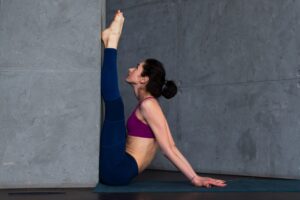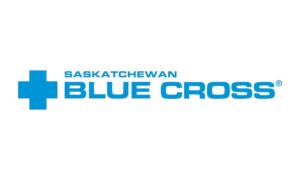How to write your personal trainer CV

There are now more than 25,000
personal trainers in the UK, so if you want to see success as a personal
trainer, your CV needs to stand out from the crowd. This
blog will explain how to write your personal trainer CV and what you should
include to give you the best chance of landing your next employment
opportunity.
Studies have shown that personalisation is a growing trend
in the fitness industry. An increasing number of people want a tailored fitness
experience specific to their goals rather than a one-size-fits-all
approach.
This is ideal for the personal training industry, as that’s exactly what you provide. If you want to take full advantage of the market, you’ll need a competitive CV. Read our guide below to learn what you should include on your personal trainer CV.
Your personal trainer CV: What to include
As a personal trainer, your CV should include your contact information, an introduction to you, your qualifications, employment history, education, and hard and soft skills. We’ll discuss what to include in each of these sections and how to ensure they’re relevant to the role you’re applying for.
Introduction and contact information
This may be the first introduction that a recruiter or
employer will have of you, so you need to make it count!
You can include a short paragraph as an introduction to
yourself and your expertise. Try to think of the most important information
that they would need to know. It’s also a good idea to weave in some of the
keywords mentioned in the job description.
If you already have a personal trainer bio that you use for your socials or your website, this can be a good place to start to give employers and recruiters an introduction to yourself.
For your contact information, make sure you include your
phone number and email. You’d be surprised how many people forget to include
these, and then there’s no way for people to contact you if they like your CV!
It’s also a good idea to include your town, city, or even postcode so that recruiters know where you’re based. If relevant, you could also include links to your socials if you run a fitness account, as it’ll give them a good impression of yourself as a personal trainer.
Qualifications
Including your qualifications on your CV is vital for
personal trainers. You need to have your Level 2 Gym Instructor and Level 3 Personal
Training Qualifications to operate in a professional environment as a personal
trainer.
Wherever you get your qualifications from, make sure they’re a CIMPSA awarding body partner. Otherwise, employers may not consider them valid. You can search for CIMPSA-approved awarding bodies on their website.
Employment history
The employment history section of your personal trainer CV
is where you can show prospective new employers how applicable you are to new
roles.
When adding your work experience, you should include the
company name, the dates you worked there, and the location. Be prepared to
explain any gaps in your employment history and why you left your previous
employers, too, as this is a common interview question.
It’s also important to include bullet points under each of
your jobs describing the skills and responsibilities that you picked up or
developed in each one. Giving specific examples shows employers that you can
apply these skills.
Whilst you’re writing your employment history section, it
helps to have the job description for the role you’re applying for open so you
can ensure you’re picking out relevant skills.
Related: 12 roles and responsibilities of a personal trainer
Education
The education section of your CV is where you can include any relevant degrees and further education you’ve accrued. This section doesn’t need to be exhaustive, as your most relevant experience will likely already be in the employment history and qualifications sections.
Hard and soft skills
If you haven’t come across hard and soft skills before,
we’ll give you a quick definition. Hard skills are skills that you’ve picked up
through education and training that are specific to your job. Soft skills are personality
traits that help you to be a good candidate for a role, such as being a good
communicator.
Adding a skills section to your CV can help recruiters and employers quickly identify your relevant skills for the job at a glance. This can also be a good place to mention any skills you may not have already included elsewhere in your CV.

Do I need a cover letter?
It’s becoming increasingly common for cover letters to be optional when applying for a new
job. That being said, attaching a cover letter to your CV may still help you
stand out from the crowd in a competitive market.
Cover letters offer the opportunity to discuss your
suitability for the job in more detail than you would on your CV. You can also
discuss what motivated you to join the fitness industry and why you want to
work for this business specifically.
So, if a cover letter isn’t a requirement in the job application, you don’t need to attach one, but it may help give employers or recruiters a better understanding of you and your CV if you do.
How should I layout my CV?
It might be surprising to hear, but a poorly laid-out CV can
get yours put in the ‘no’ pile before it’s even been read properly. Recruiters
and employers see a lot of CVs, so the information you include needs to be
clear and simple so the most important bits are seen straight away.
Bullet points work really well for this. They make it clear
and easy to read so employers can quickly and easily identify why you would be
suitable for the role.
Your CV should be laid out in reverse chronological order,
so your most recent and relevant experience comes first on the page. This saves
them from having to read to the end of your CV to find your current skills and
qualifications.
There’s no need to use fancy designs for your CV, either.
Having lots of bold colours and different-sized fonts can actually make your CV
more difficult to follow. You can find lots of CV
templates online as a good starting point.
If you’re unsure how long your CV should be, a good rule of thumb is to make it between one and two pages. You don’t want to make it too short as it’ll look like you have little experience, and you don’t want to make it too long as it may dilute the most important information.

Specialist personal trainer insurance through Insure4Sport
As a personal trainer, you may be aware of just how
important insurance can be for you when operating in a professional
environment. Even if you are employed by a gym that has its own insurance in
place, you may still be required to have your own individual cover, and you
should always check this with your employer.
Whether it’s damage to your equipment or an injury to yourself or one of your clients, specialist personal trainer insurance can give you the peace of mind you need should the worst happen.
Specialist insurance for personal trainers and fitness instructors
through Insure4Sport can protect you against third-party claims, theft and loss
of or damage to any sports equipment you own, and even loss of earnings should
you suffer a personal injury that results in your inability to work.
Learn more about specialist personal trainer insurance
through Insure4Sport here, or get a quick quote today.






